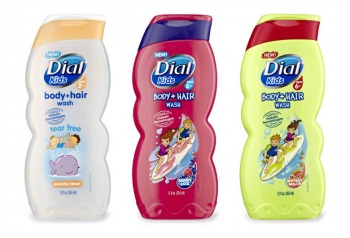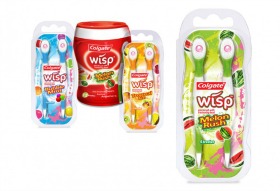
2014-03-28 23:46:06
Designing for Kids, and Their Moms
2014-03-28 23:46:06
By Marie Redding, Associate Editor
|
|
Tailoring a design concept to a specific age group is critical when marketing a line of kids' personal care products.
“Effective packaging for kids must present the proper character, tone and story via visual messaging to deliver on what we call the five E’s - engage, emote, entice, enhance and endure,” says Bill Goodwin, founder of Goodwin Design Group.
Defining ‘Kids’
The design agency focuses on this young consumer group, and their families - and has worked on branding personal care products for kids on projects for Disney, Johnson & Johnson, P&G, Kimberley-Clark, Walmart and Colgate, among others.
But – not everyone defines ‘kids’ in the same way, which is a mistake, Goodwin says. He explains how different age groups shouldn’t be all “lumped” together, because there are so many differences among kids that are different ages, which affect their shopping habits and preferences.
“Every client we speak to has a different interpretation of ‘kids’ – but to me, kids are aged 5-7,” says Goodwin. “All other ages are something else –infants, toddlers, teens, tweens, twixters, etc.”
But what every age group has in common is some type of relationship with their parents, which will affect every purchase decision.
Mom’s Influence Is More Important
According to Goodwin’s research, kids are influencing moms’ choices in everything from movies to food, as well as personal care and beauty products – more than ever before.
“Understanding kids and their relationships with their parents is key to knowing what is, and will, drive purchases,” he says.
Goodwin also explains that relationships have changed, especially how moms and daughters interact. “The same conflicts still exist, but kids have more of a connection with their parents now. There’s more continuous sharing – especially between moms and daughters,” he explains.
How long are kids’ purchasing decisions being influenced by mom?
“Kids are following moms’ input at their earliest ages, and transition over time, up until roughly age 13 - the ‘Facebook age,’” says Goodwin. “Then, it’s all about what they want, like demanding their own scents for a lotion, or flavor for a toothpaste - and they find it themselves.”
Personalize Everything, Create Choices
As much sharing that’s happening between kids and parents these days, however, they’re not sharing beauty or personal care products. Everyone – from an increasingly early age – expects their products to be specifically tailored to them.
When the agency worked on designing the packaging for a new line of Dialsoap for kids, its team demonstrated this by speaking to a panel of moms.
“We asked them to take photos of their bathrooms, before cleaning up. Seeing how many products were sitting out on the sink, in the tub area, and on shelves, it proved our point,” says Goodwin. “Then, we spoke to Dial about families, relationships, and how they use products,” he explains.
Goodwin continues, “My wife and I have 4 kids, and began bathing them with a specific baby shampoo. That became specific 3-in-1 washes as they grew older. Now as they age up, each has their own preferred shampoo, soap or body wash, and even toothpaste – and we will ultimately have to buy four of everything.”
Designing Dial
Dial’s kids’ line of body washes consist of scents like Berry Cool andWatery Melon, and an unscented product for babies.
The team at Goodwin designed the line’s custom, curved bottle shape. A proprietary, curved bottle shape differentiates the line among its competitors. “A custom mold is a large investment – but it is the one way a brand can compete in a mature category. Color is difficult to own, but structure provides the greatest competitive advantage. And it’s important because we remember shape first, and color second.”
The team at Goodwin did the initial structural designs for Dial’s new bottle shape, and then the company’s internal team created the bottle and completed the project to bring it to market.
|
|
“Mom is choosing this product – it’s not the kids at the earliest stage making this decision. The design had to be all about efficacy, because kids have perfect skin, so you don’t need a complex cleanser. We had to communicate ‘pure clean fun,’” Goodwin explains.
For older kids, an age-appropriate illustration adorns the bottle. “We tested different concepts for structures and illustrations, and it was all about communicating ‘fun,’ along with the ‘good, clean’ message of efficacy and simplicity,” Goodwin says.
Colgate’s Wisp
Goodwin was also involved in the early stages of the development process for Colgate’s Wisp packaging.
Wisp is a disposable mini toothbrush, available in traditional flavors, including Cool Mint Whitening – but there’s also one called Icy Bubble, which will no doubt appeal to kids.
One of Goodwin’s original design concepts (which is shown) includes even more flavor options than what the brand currently offers, like Melon Rush and Tropical Ice.
The Bottom Line
Although having too many options might seem confusing, consumers – at any age – have come to expect it. Brands have ‘trained’ consumers to think this way.
Goodwin offers this last bit of advice: “Kids need options. And if your brand isn’t offering them, mom will find them somewhere else.”
LinkedIn






